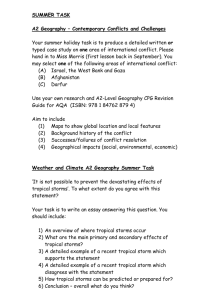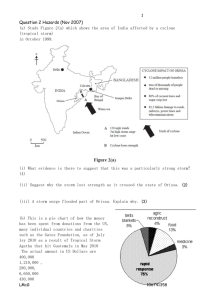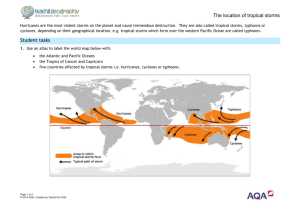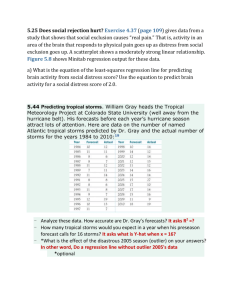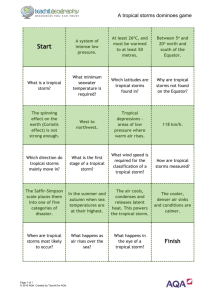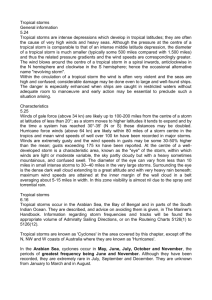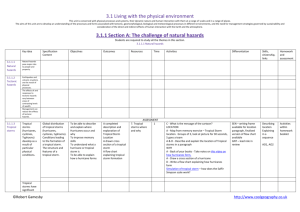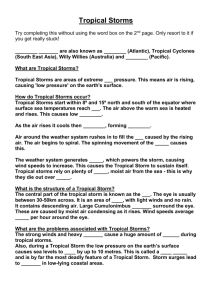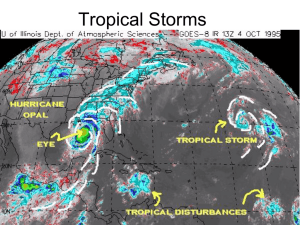introducing tropical storms
advertisement
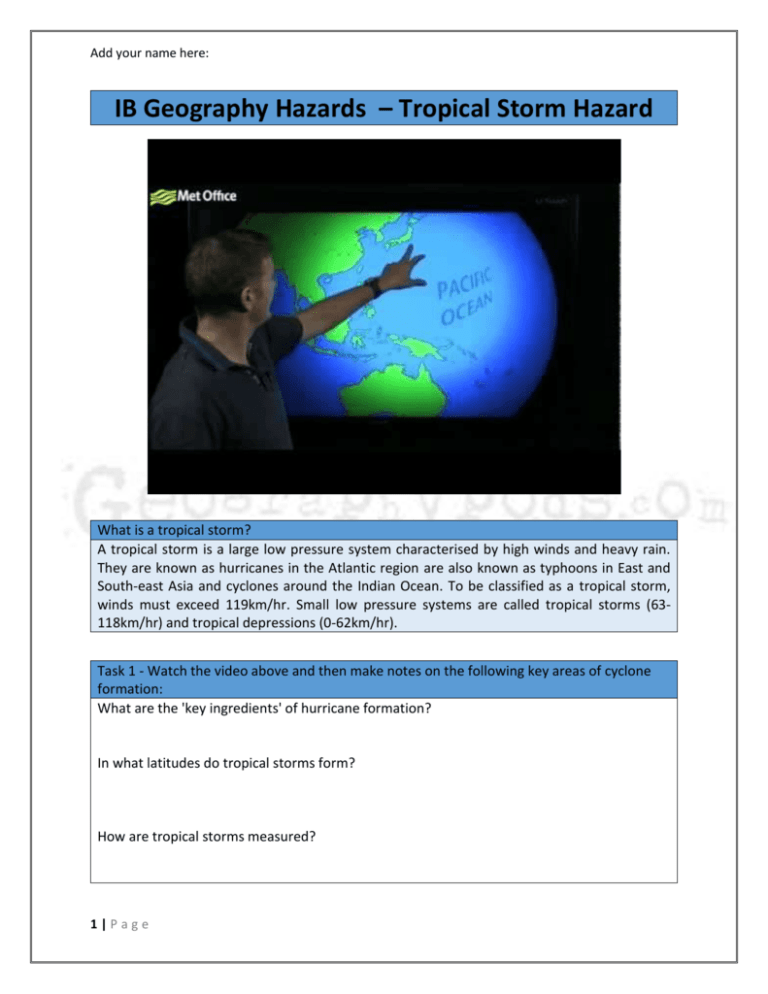
Add your name here: IB Geography Hazards – Tropical Storm Hazard What is a tropical storm? A tropical storm is a large low pressure system characterised by high winds and heavy rain. They are known as hurricanes in the Atlantic region are also known as typhoons in East and South-east Asia and cyclones around the Indian Ocean. To be classified as a tropical storm, winds must exceed 119km/hr. Small low pressure systems are called tropical storms (63118km/hr) and tropical depressions (0-62km/hr). Task 1 - Watch the video above and then make notes on the following key areas of cyclone formation: What are the 'key ingredients' of hurricane formation? In what latitudes do tropical storms form? How are tropical storms measured? 1|Page Add your name here: Severity Scales & Storm Surges Task 2 – Using the diagram above, explain how a storm surge is created and the hazards it presents to vulnerable populations in coastal areas. Help here if needed. Task 3 – Convert the ranges above into KM / hr for each of the five levels. 2|Page Add your name here: Predicting & Meausuring Tropical Storms Above is a map of the world showing the spatial distribution of tropical storm events. Task 4 - Comment on the global distribution of cyclone activity and the track taken by storms in the northern and southern hemispheres. (think about your video notes from task 1) Task 5 – Link to Patterns & Change – Identify two areas on the map that have high population densities or overall populations and also suffer from serious tropical storms (4&5). 3|Page Add your name here: Task 6 - Describe the distribution of tropical storms of with a rating of 5 since 1900. Additional Notes 4|Page
